Salvador has changed a lot since 2007… I remembered a somewhat rundown, decrepit Colonial City completely overrun by tourists. First, the drive from the airport to Santo Antonio, near the Pelourinho, showed a highly modern city, large avenues lined with modern high-rises and brand new shopping centers. Then, the Pelourinho has been completely restored for the Football World Cup in 2014. Last but not least, Salvador was almost void of tourists… Maybe being there on a Sunday and a Monday explains things, but at times I had the streets for myself…
There are many highlights in and around Salvador de Bahia. Plan enough time if you want to be able to scratch below the surface. And once again, Salvador showed me that going Off The Beaten Track only requires taking a few steps aside from the main tourist drags, to be in a place that sees very few to no tourists at all…
- Stroll the largest Colonial City of the Americas
Salvador de Bahia, with the Pelourinho & the Santo Antonio District, has the largest Colonial City of the Americas! As the city has been completely restorated in 2013 for the Football Worldcup in 2014 (well, at least the facades have been…), this city offers a unique experience. Actually, the colonial houses in Santo Antonio are even more refined than those in the more popular Pelourinho. Salvador has also been called the city of the 365 churches. There are maybe not that many, but you still can can spend days visiting them all…
- Leave the Pelourinho and discover other aspects of Salvador
I normally visit cities on my own, but when Patrice, a good friend, recommended the tours in fisher communities offered by Bahia Metisse, it caught my attention. So I went with Anne & Nicolas, on two consecutive days, and discovered completely new aspects of Salvador, which I would most likely never have experienced without them. The “Social Tour” was the opportunity to discover a fisher community in a favela, and the City Tour was the opportunity to see areas of Salvador.
- Listen, dance or learn Samba
Salvador is the very place where Samba was born and the place to hear some of the best Samba in the world. Actually, you only need to stroll the streets long enough to experience Samba Schools playing for a small contribution and this not only on Tuesday nights.
- Discover Capoeira
Probably the best way to better understand Capoeira is to visit a Capoeira class at the Fort of the Capoeira in Santo Antonio. Just ask politely if you can have a look, and you will be greated with a large smile. By observing the explanations of the teacher (no real need to understand Portuguese), you will get a much better insight of this Martial Art. Photos and films are definitely not welcome, though.
- Experience a Codomblé Ceremony
One evening I spent at a Candomblé, a religious ceremony based on the culture, tradition and religion of the African slaves brought to Brazil that developed and survived in the African community. According to the Afro-Brazilian Museum, more than 4.5 million Africans were brought to Brazil as slaves until 1851, the date when slavery was abolished. During such a ceremony a certain Orixá is being worshipped. An Orixá is a sort of deity that is a mediator between the community to the supreme god and provides protection in one specific way, for example guaranteeing health. At a Candomblé women move slowly in a circle and some fall in a trance. They are then taken outside by those women whose role it is to do just that. The Terreira, the temple in which a Candomblé takes place, was way out in the northern part of Salvador and you definitely need to have a local member of the community to take you there. You are picked up and taken to the Terreira and after about two or three hours you are taken back to your Pousada. You may see Candomblé advertised in the Pelo, but these are tourist shows, whereas we were in a residential neighbourhood with lots of locals attending the ceremony. A candomblé is rather informal with people who come and go, though it seems that the person who attend the ceremony do dress up a bit. Elderly female worshippers are met with great respect using a certain ritual of greeting. After the dance food is brought in baskets and eventually served to everybody in banana leaves, a little bit of everything, since the food is donated by the members of the community.
- Discover the unique culture of Bahia
Nowhere in the Americas have the descendants of African slaves preserved their culture more strongly than here! It is obvious in the music, the cuisine, the religion or types of dance of this Bahia town – at times I almost forgot that I was in Brazil!
But what most stroke me was that the color of the skin is here of none or little importance, with people mixing in complete indifference. This is a truly unique experience…
- Relax in Morro de Sao Paulo
Noone should go to Brazil without experiencing its beautiful, postcard-like beaches. There are many, many opportunities to do so, but Morro de Sao Paulo, an island two hours from Salvador by boat (high speed catamaran), is definitely a great option! Except if you are in for some serious parties, and ready to pay the price, Morro de Sao Paulo is best experience during the week, when the island is relatively “free of tourists” (on weekends, throngs of Brazilians arrive). The best options for accomodations are the First Beach one (in the village) or beach three: the Second Beach is THE place to go out, packed with restaurants and bars and stalls beautifully decorated with fruits selling all kind of exotic fruit juices pepped up with Cachaca or Ron. The mix of pineapple, ginger and Cachaca was delightful, as was the one with passion fruits, mango and… cachaca! The Fourth Beach and the Fifth Beach are just like on postcards: a kilometre-long beach of white sand with palm trees and nobody. We enjoyed walking for hours along the sea until the sun would get too hot around noon time.
- Discover the many savours of Bahianese Cuisine
Bahianese cuisine finds its roots in the African culture of the slaves taken to Brazil, but is also deeply influenced by the indigenous culture and the one of the many European imigrants. I especially enjoyed the “Moqueca”, a fish or shrimp stew in coconut milk, with tomatoes, onions, garlic, coriander and some palm oil (dendê).
- Experience Brazil’s second largest carnival
I haven’t been there! But Salvador hosts the second largest Carnival in Brazil, which is supposed to be the most vivid and electric. It is said to be one of the wildest parties ever…
- Observe the Military Police
The Military Police, supported by the Communal Police and the Tourist Police, is there to ensure the security of the tourists in the Pelourinho. They are omnipresent, positioned on every corner, mostly looking bored and chatting with one another or being buzy on their smartphone. But the most hilarious scenes are the ones on motorbikes or golf electrocars, always in pairs, always with one holding his gun in his hand ready for… For what actually, I do not know!

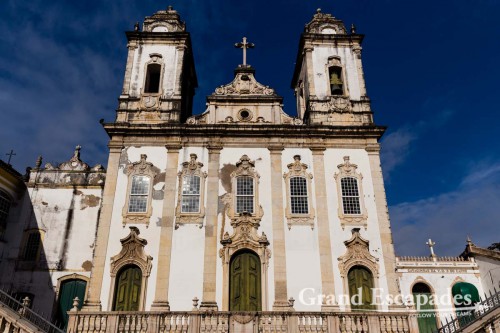
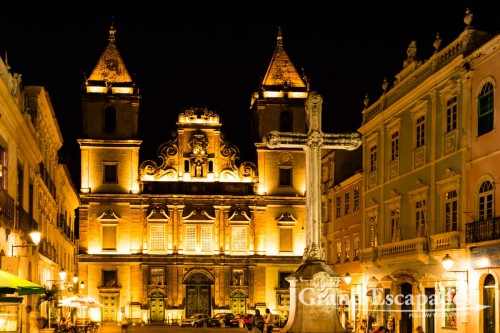
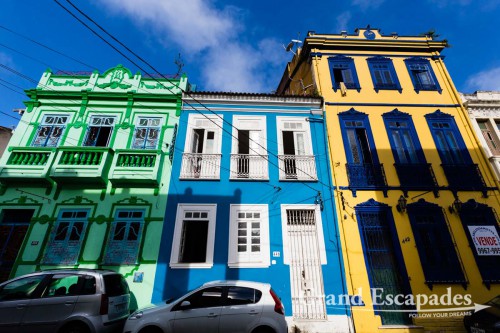
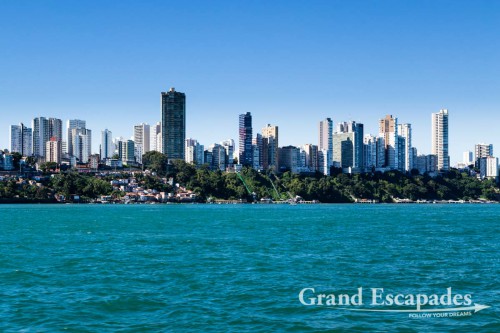
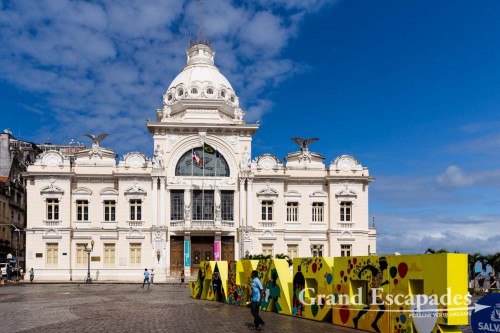
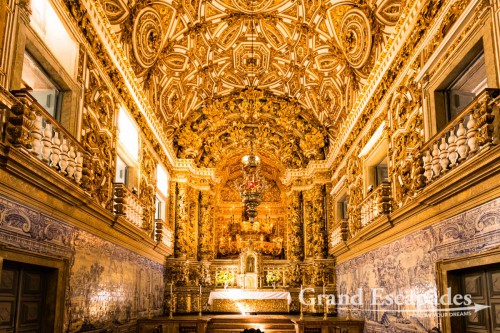
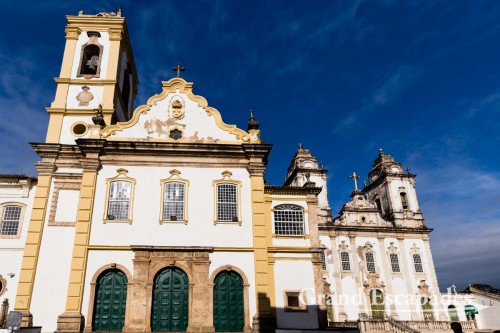
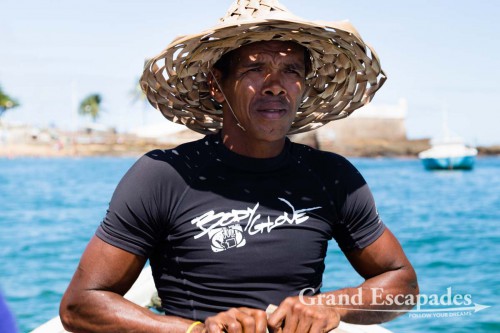
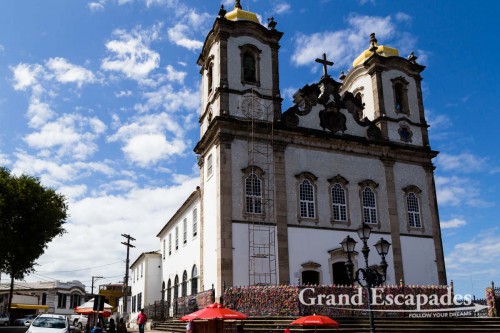
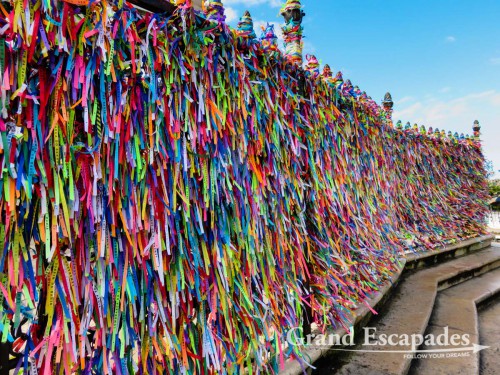
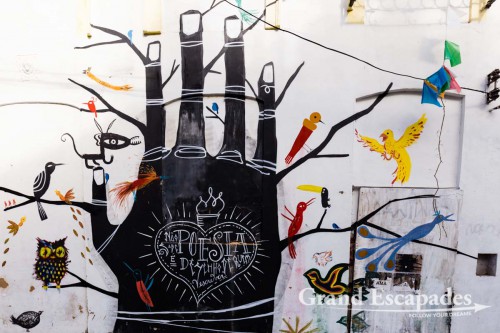
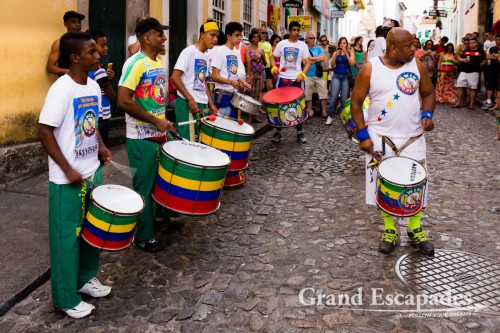
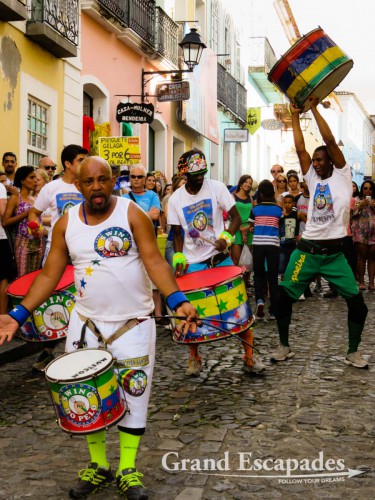
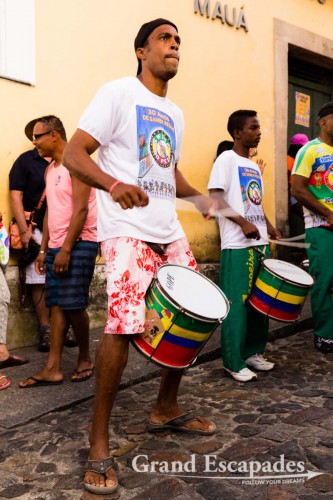
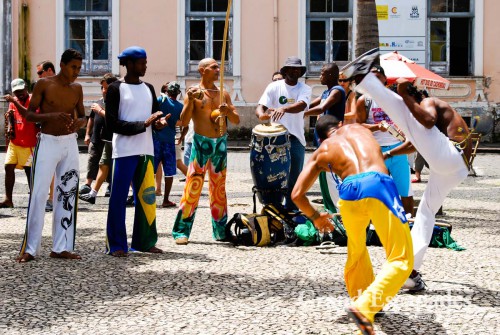
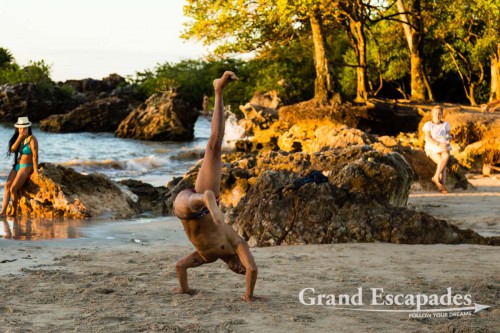
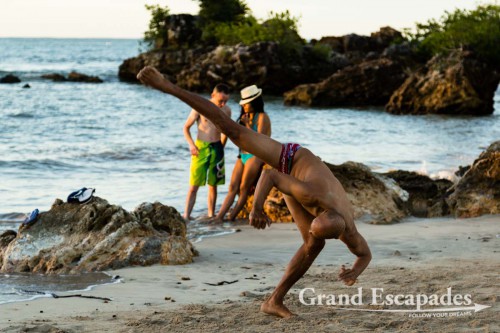
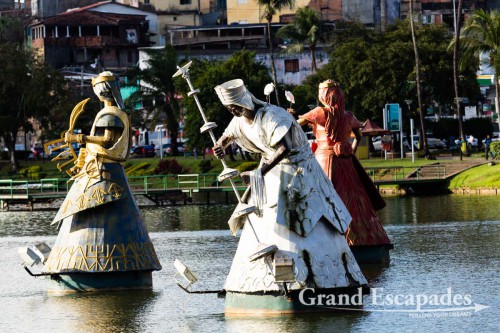
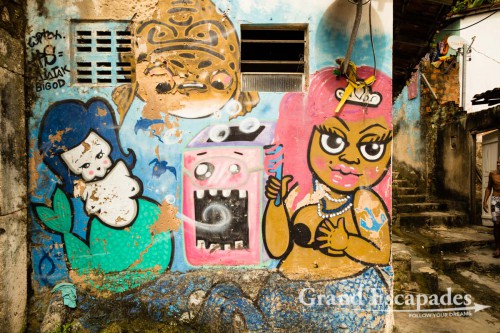
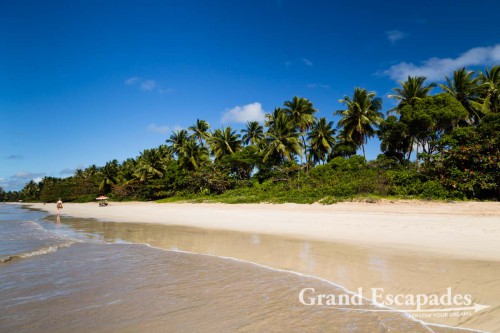
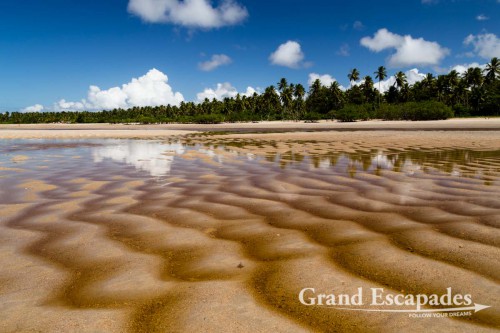
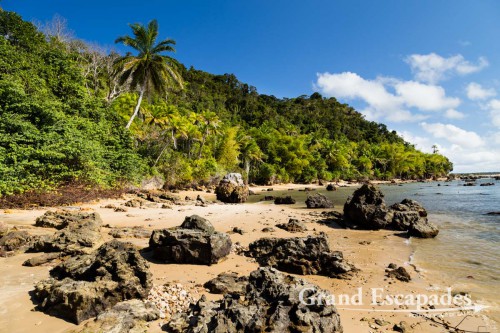
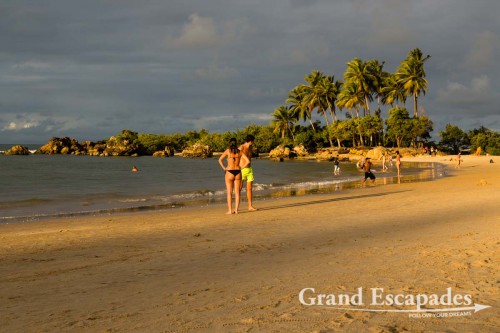
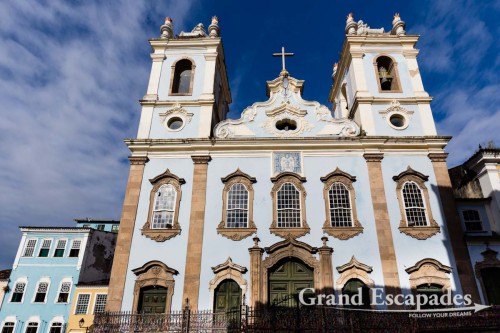
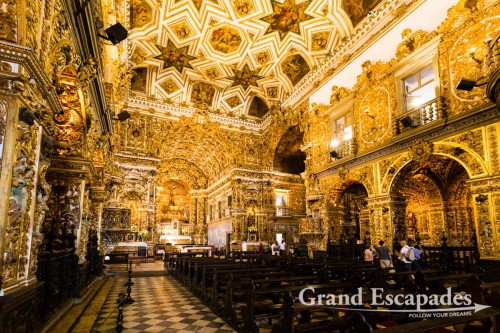
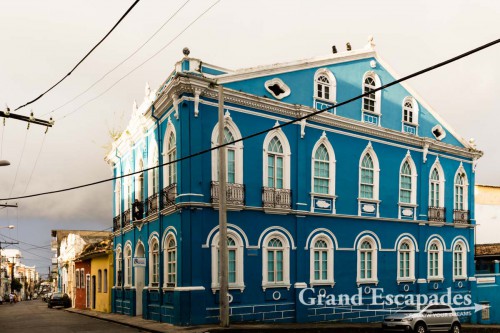
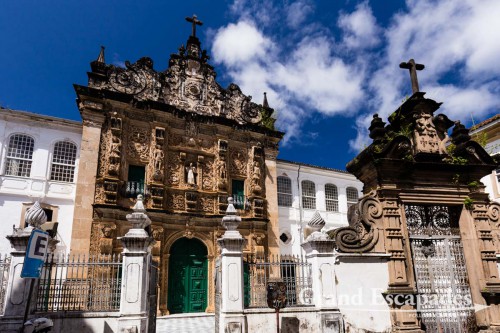
No comments yet.